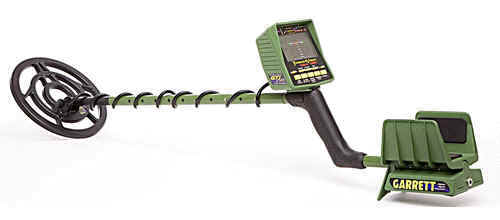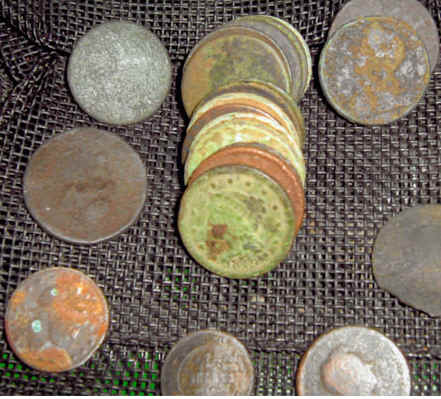|
From
Brevard County, Florida: A Short History to 1955 by
John M. Eriksen

Florida Shipwrecks and Buried Treasure
Florida’s
Gold and Silver

 
Without the aid of the
chronometer (not perfected until 1759) early Spanish navigators hugged the
Florida shore to avoid the uncharted shoals and coral reefs along the
Great Bahama Bank and Little Bahama Bank.
Consequently, any hurricanes or storms they encountered increased
the chance of beaching on Florida's coast or any of the dozens of shoals
that dot its Atlantic seaboard, particularly from the Gilbert Shoal near
Stuart to the Southeast Shoal off Cape Canaveral.
According to Robert Marx, the author of Shipwrecks in Florida
Waters: A Billion Dollar Graveyard, the first documented loss occurred
in 1530 "near Cape Canaveral."
Other wrecks noted in the Spanish archives include: "1551—wrecked near Ais
; 1554—ship of Farfan sank near Ais;
1556—the
Indians of the King of Ais have taken more than a million pesos in gold
and silver and much jewelry near Cape Canaveral."

The
Summer of 1715
The year 1700 marked a period
of rapid decline for the Ais
.
At the same time, Spain's use of the Bahama Channel along the Ais
coast was abandoned. The
Spanish Empire was suddenly disrupted after King Charles II died in 1700
without an heir to the throne. While
a struggle for power erupted in Europe, the traditional flow of treasure
shipments ceased. The War of
Spanish Succession (1702‑1714) rearranged Europe, and when the newly
defined Spain emerged in 1714, she eagerly awaited the resumption of the
treasure imports. A vast
assortment of treasure had accumulated during the twelve years of war.
Awaiting transport were
over 14,000,000 pesos worth of riches from the Americas and the Orient.
A peso at this time was worth roughly one troy ounce of silver.
On July 24, 1715, a Spanish
flotilla of eleven ships left Havana Harbor for the two-month journey to
Spain. It was one of the
largest shipments ever transported from the Spanish colonies.
A few days later, a powerful hurricane
wrecked all but one of the ships in one of the worst sea
disasters in history. The
Florida coast between St. Lucie and Matanzas was littered with wreckage.
Over 700 lives were lost in the pounding surf.
However, about 1500 survivors were swept ashore and made camps on
the dune to await rescue. The
Ais
were known to be unpredictable so hasty preparations were made
to send lifeboats to St. Augustine and Havana.
To the surprise of the Spanish, the Ais offered fresh seafood and
taught them how to gather sea grapes, palmetto berries, and cabbage palm
hearts.

Much of the treasure settled
just off a future Brevard coast between Sebastian
and the Indian River Inlet (today's Ft. Pierce
).
Spanish salvors established camps and worked diligently to recover
roughly one‑third of the submerged riches.
Besides small amounts taken
by pirates, the balance of 14,000,000 pesos lay scattered just off shore
for the next 245 years.
Incredibly, this huge fortune
was overlooked and eventually forgotten for centuries. The British historian, Bernard Romans, gave a good account of
the wreck and place in 1775, but it remained buried in the pages of his
lengthy Florida history.14 The
event became more myth than fact. Some
research and archaeological digs were done in the 1940s in areas where
Spanish artifacts were found. But
solving the mystery remained for someone with the intense curiosity and
willingness to translate miscellaneous Spanish archives, read
out‑of‑print histories, and most importantly, go out and look
at the ever‑changing ocean floor.

Kip
Wagner
Kip Wagner
had the initiative to do all this and more.
In 1949, the former building contractor closed his office and
became a dedicated treasure hunter. For
the next ten years he prowled the beach between Sebastian
and Ft. Pierce
.
Finally in January 1961, some of the fabled treasure momentarily
emerged from the shifting submarine sands.
Over the next several years, Wagner and others recovered much of
what the salvors of 1715 could not reach.
Although many artifacts
have been recovered over the years, lost treasure, such as gold
, silver and jewelry is still
being found. The best exhibit
of authentic 1715 artifacts is the Mel Fisher
Treasure Museum in the town of Sebastian. The McLarty
Museum, a National Historical Landmark south of the Sebastian State Park,
was built in the area of an original salvor's encampment and also contains
many displays and artifacts of the period.15
The sinking of the 1715 fleet
was the last major event of Spain's first tenure and control
of this area. The peninsula
continued to be known as La Florida, however, the Spanish
"continent" of Florida began to erode in the years following the
Mayflower landing in 1620. The
thirteenth British colony, Georgia, was settled in 1733.
Continued British expansion produced a Florida boundary similar to
present. Local place-names on
Spanish maps at the time included Rio de Ais
(Indian River), Santa Lucia, Cape Canaveral, Los Musquitos
(today's Ponce Inlet), San Sebastian
River, and Palmer de Ais.
Only one of these names could accurately describe the entire area.
The whole of east central Florida was known as Los Musquitos, with
various spellings, from the 1500s until 1844
Question:
Are metal detectors allowed on the beach at Sebastian State Park?
Answer: Yes, metal detectors are allowed but only as
described below:
1. In that area between the waterline and toe of the dune on the ocean
beaches.
http://www.floridastateparks.org/sebastianinlet/ParkSummary.cfm
If
you have any additional questions, please contact the park at
321-984-4852.
Reference
http://en.wikipedia.org/wiki/1715_Treasure_Fleet
http://thethunderchild.com/GhostGunsVirginia/TreasureWrecks/KipWagner.html
Burgess,
Robert F. et.al. Gold, Galleons, and Archaeology. Indianapolis:
The Bobbs‑Merrill Co., 1976.
Burgess,
Robert F., Sunken Treasure: Six Who Found Fortunes, Dodd, Mead
& Company, 1988.
Eriksen,
John M. Brevard County, Florida: A Short History to 1955.
Melbourne, Florida: JohnEriksen.net/,
2008.
Marx,
Robert F. Shipwrecks in Florida Waters: A Billion Dollar Graveyard.
Chuluota: Mickler House, 1985.
Romans,
Bernard. A Consise Natural History of East and West Florida. Gainesville:
University Presses of Florida, 1962. [Reprint of 1775 edition]
Rouse,
Irving. A Survey of Indian River Archeology.
New York: AMS Press, 1981.
Wagner,
Kip. Pieces of Eight by,
as told to L.B. Taylor, Jr., 1966.

Top
of Page
|